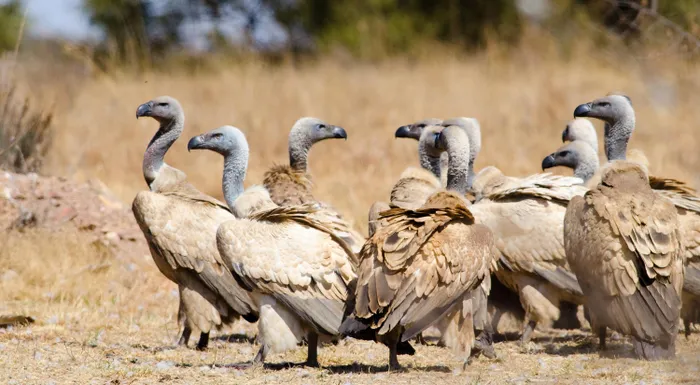Discover the fascinating world of Cape Vultures: nature's unsung heroes

Cape Vultures aren’t just big—they’re massive. With a wingspan reaching up to 2.6 metres, they glide with effortless grace. Weighing between 7 and 11 kilograms, they are the largest vultures in Southern Africa.
Image: Supplied
Think you know vultures? Think again. The Cape Vulture, an awe-inspiring and critically endangered giant of South African skies, offers a fascinating glimpse into the marvels of our natural world. These majestic birds play a crucial role in the ecosystem by scavenging on carrion, yet many remain unaware of their significance. Fortunately, the Bothongo Rhino & Lion Nature Reserve provides one of the premier locations to observe these magnificent creatures in action, thanks to its unique Vulture Café and a secluded hide, where guests can witness these birds' dramatic behaviours as they gather after predator feedings.
“Cape Vultures are absolutely fascinating once you get to know them,” said Didi Mahlo, field ranger at the Bothongo Rhino & Lion Nature Reserve.
“They’re misunderstood and under-appreciated, but watching them in the wild—especially during a feeding frenzy—changes your perspective completely.”
Here are five wild and wonderful facts about Cape Vultures and why catching a glimpse of them at the Vulture Café should be on every wildlife lover’s bucket list:

Often mistaken for being gruesome or aggressive, vultures are among the most important members of the animal kingdom.
Image: Supllied
- They can soar higher than jet planes: Cape Vultures are expert thermal riders.The utilise warm air currents to lift them to astonishing altitudes. They can reach heights of over 7,000 metres, higher than most commercial airplanes. From this vantage point, they are able to spot carcasses from kilometres away, demonstrating their incredible adaptation to life on the wing.
- They’re nature’s unsung heroes: Often perceived as gruesome and aggressive, vultures are among the most important members of the ecosystem. Their highly acidic stomachs allow them to safely consume decaying meat teeming with dangerous bacteria, such as anthrax and rabies. By cleaning up carrion, they play a vital role in disease control and maintaining ecological balance.
- They’re huge (and heavy!): Notoriously massive, Cape Vultures boast a wingspan of up to 2.6 metres and weigh between 7 and 11 kilograms, making them the largest vultures in Southern Africa. Their immense size and soaring grace make them truly impressive creatures.
- They’re surprisingly social and smart: Cape Vultures thrive in large flocks, nesting and feeding communally, often in groups of hundreds. They rely on each other to spot food sources and use distinctive flight patterns to alert their peers. Observing their interactions at the Vulture Café, especially after predator feedings, resembles a dramatic play, filled with intricate squabbles and tactical movements as they vie for access to a meal.
- They’re critically endangered — and need our help: Despite their strength and intelligence, Cape Vultures are facing a serious crisis. They contend with major threats including habitat loss, accidental poisoning, collisions with power lines, and a diminishing number of safe nesting sites. Their populations are in rapid decline, leading to their designation as endangered on the IUCN Red List. Places like the Bothongo Rhino & Lion Nature Reserve not only provide a sanctuary but also raise vital awareness about the species through education and eco-tourism.
Located just 45 minutes from Johannesburg, the Bothongo Rhino & Lion Nature Reserve is home to one of South Africa’s best-kept secrets: the Vulture Café. Set near a secluded hide, visitors can enjoy a meal while watching dozens of vultures descend from the sky to feast after predator enclosures are fed. Predator feedings at the park occur at 13:00 every Wednesday, Saturday, Sunday, and public holidays.
“Seeing a Cape Vulture land just metres from you is something you don’t forget,” Didi adds. “It’s wild, it’s real, and it’s incredibly special. We’re proud to give people the chance to experience it safely and ethically.” To witness these majestic birds in action, visit www.rhinolion.co.za for opening times, predator feeding schedules, and hide access information.
Related Topics:
